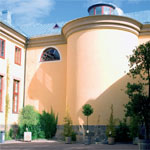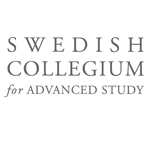
Christoph Harbsmeier
Senior Adviser, Bernhard Karlgren Programme, SCAS.
Professor of Chinese, University of Oslo.
Adjunct Professor of Chinese, Peking University
Christoph Harbsmeier studied Chinese at Merton College,
University of Oxford. In 1981, he received his
Ph.D. from the
University of Copenhagen. In addition to his position as Professor
of Chinese at the
University of Oslo, he serves as Adjunct Professor
of Chinese at Peking University; Fudan University,
Shanghai;
Shanghai Normal University; East China Normal University,
Shanghai; Wuhan University;
Xinjiang University, Urumqi; and
Zhejiang University, Hangzhou. In recent years, he has also been
Visiting Professor at Charles University, Prague; Princeton University;
the University of Oxford; the
University of California,
Berkeley; the University of Michigan, Ann Arbor; the Chinese
University of
Hong Kong; and the Centre national de la recherche
scientifique (CNRS), Paris. Harbsmeier has been
Visiting Fellow at
SCAS on several occasions, the first of which was in 2004–05. He has
also been
Hu Shi Lecturer in the Humanities at Peking University.
Harbsmeier directs the project ‘Thesaurus Linguae Sericae: A
Historical and Comparative Encyclopaedia
of Chinese Conceptual
Schemes’ (TLS). The project, in which SCAS is involved, aims
at exploring the
concepts of the Chinese language and is implemented
as an interactive database whose contributors hail
from many countries, East and West. In 2005, Harbsmeier was awarded
the University of Oslo Prize for
Outstanding Research, and in
2009, he received the Alexander von Humboldt Research Award.
His books
include Wilhelm von Humboldts Brief an Abel-Remusat
und die philosophische Grammatik des
Altchinesischen (1979),
Aspects of Classical Chinese Syntax (1981) and ‘Language and Logic in
Traditional
China’, volume 7.1, in Science and Civilisation in China (ed. J. Needham, 1998). On modern art history
he has written The
Cartoonist Feng Zikai: Social Realism with a Buddhist Face (1984).
Harbsmeier is a member of the Norwegian Academy of Science
and Letters.
This information is accurate as of the academic year 2014-15.






